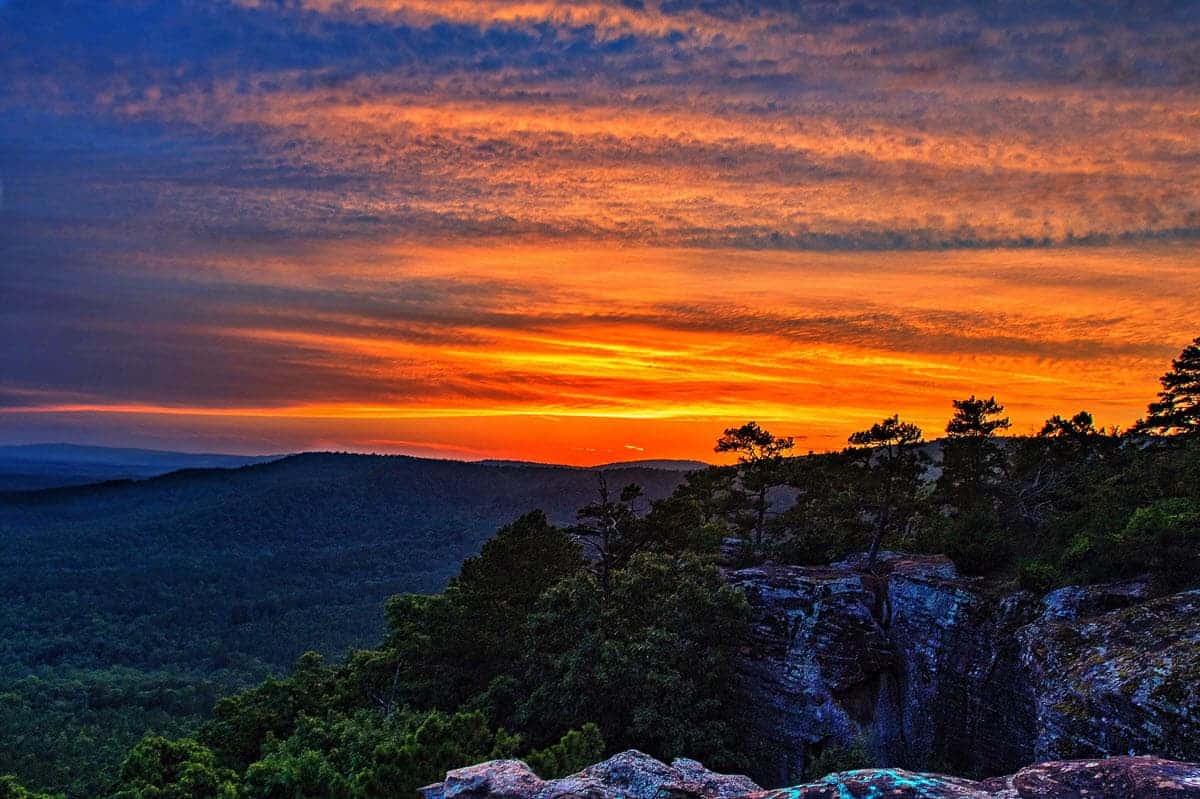Arkansas is a state in the southeastern region of the United States. It is the 29th largest state by area. A little over 3 million residents occupy Arkansas, and as of the 2020 Census is the 34th most populated state. The state capital, Little Rock, is the most populated city, a bustling hub of transportation and business, and a center for culture and government.
Arkansas is known for its beautiful natural features such as mountains, lakes, rivers, and waterfalls, earning it the nickname “The Natural State.” Its varied geography, ranging from the mountainous like the Ozark and Ouachita regions to the lowlands like those along the Mississippi River, makes it ideal for adventurers and photographers.
The Natural State
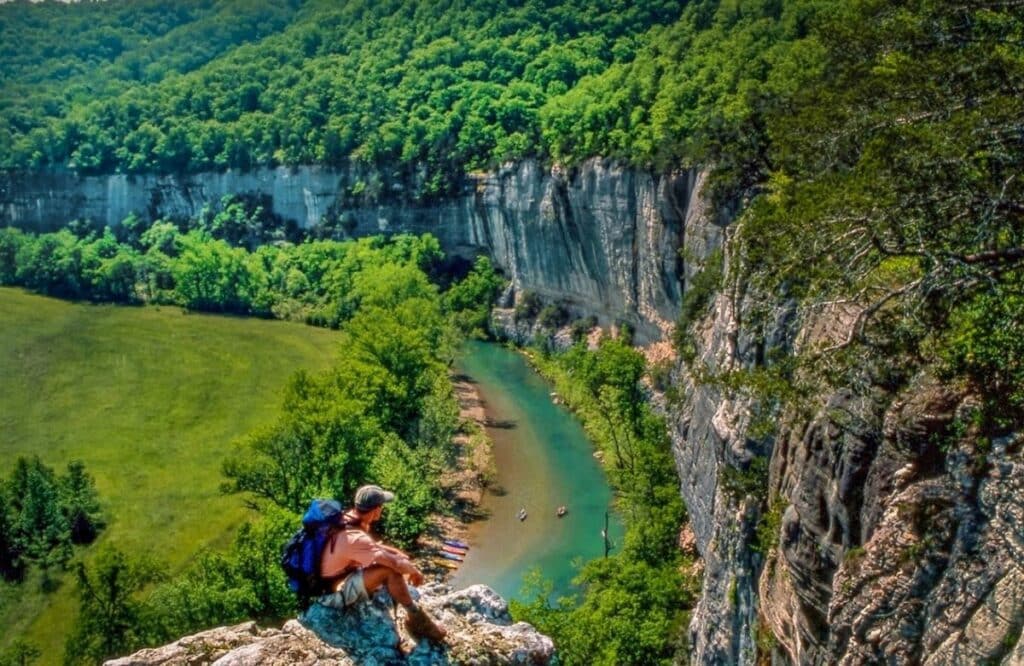
One of the most distinguishing features of Arkansas is its unparalleled natural beauty, boasting 52 state parks with clear lakes and streams, picturesque landscapes, and diverse wildlife. It even has beaches– several of Arkansas’s lakes have sandy shores, making beach getaways possible despite being landlocked. An excellent way to experience the best of Arkansas is to drive through the Scenic 7, a state-designated byway that goes through four varied regions.
A Mammoth of a Spring
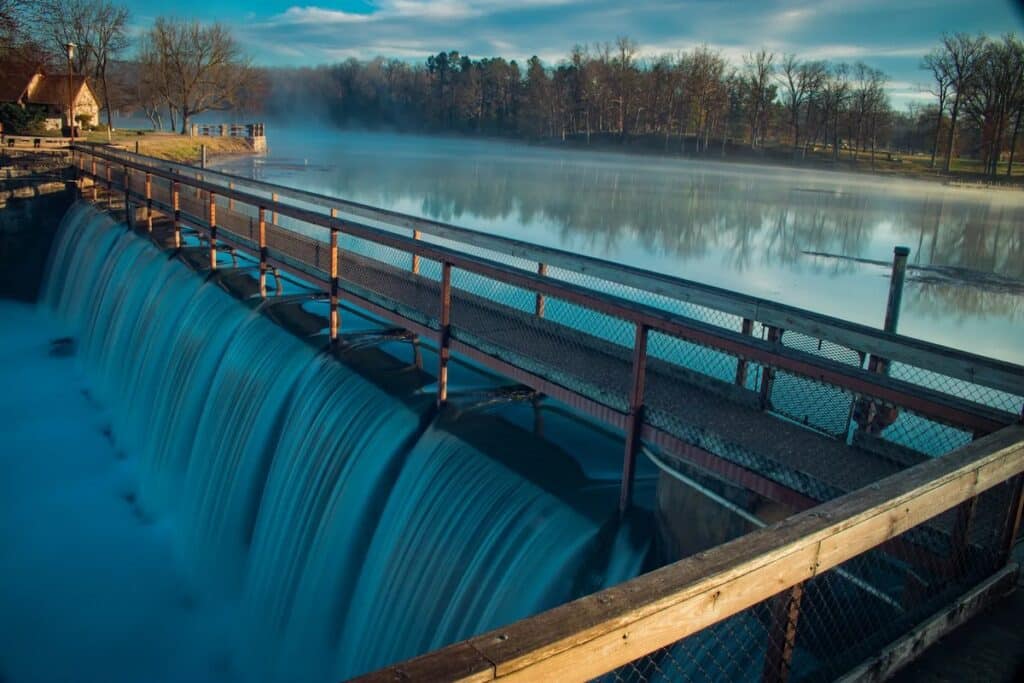
Emerging from the Ozark Plateau, Mammoth Spring is the largest spring in Arkansas and the seventh-largest natural spring in the world. This national landmark flows with nine million gallons of water per hour, forming a 10-acre spring pool. Water from this spring originates from rain that falls in southern Missouri, which seeps into the water table and comes out of the ground after passing through a complex network of underground cavities. The spring was used to power a mill until it was purchased in 1925 by the Arkansas-Missouri Power company, which used it for a hydroelectric plant until 1972.
Fountain of Health

Believed to have water with healing properties, the area now known as Hot Springs National Park, located in the Ouachita Mountains, was popular among travelers long before its establishment as a park in 1921. The water from these springs is nonvolcanic and considered high quality, hence its reputation. Today, attractions such as an observation tower, hiking trails, and old bathhouses draw tourists into the park.
Don’t Give a Dam

Running through the four counties of Newton, Searcy, Marion, and Baxter, the Buffalo National River–America’s first national river–stands as one of the few remaining free-flowing, undammed rivers. In the 1960s, The Ozark Society thwarted threats to dam the river. One hundred thirty-five miles long, it has been an attraction since prehistoric times and was one of the first European settlements in the 1820s.
The Little Rock That Could

The state capital’s name has a rather mundane history. In 1722, French explorer Jean-Baptiste Bénard de la Harpe named it after a small rock along the southern bank of the Arkansas River. The rock was used as a landmark during the early days of sailing and is located across a bigger rock formation called, unsurprisingly, The Big Rock. The capital is nothing short of little, however, as it headquarters several banks, retail stores, consumer goods brands, and nonprofit organizations within its boundaries.
Diamond Rush
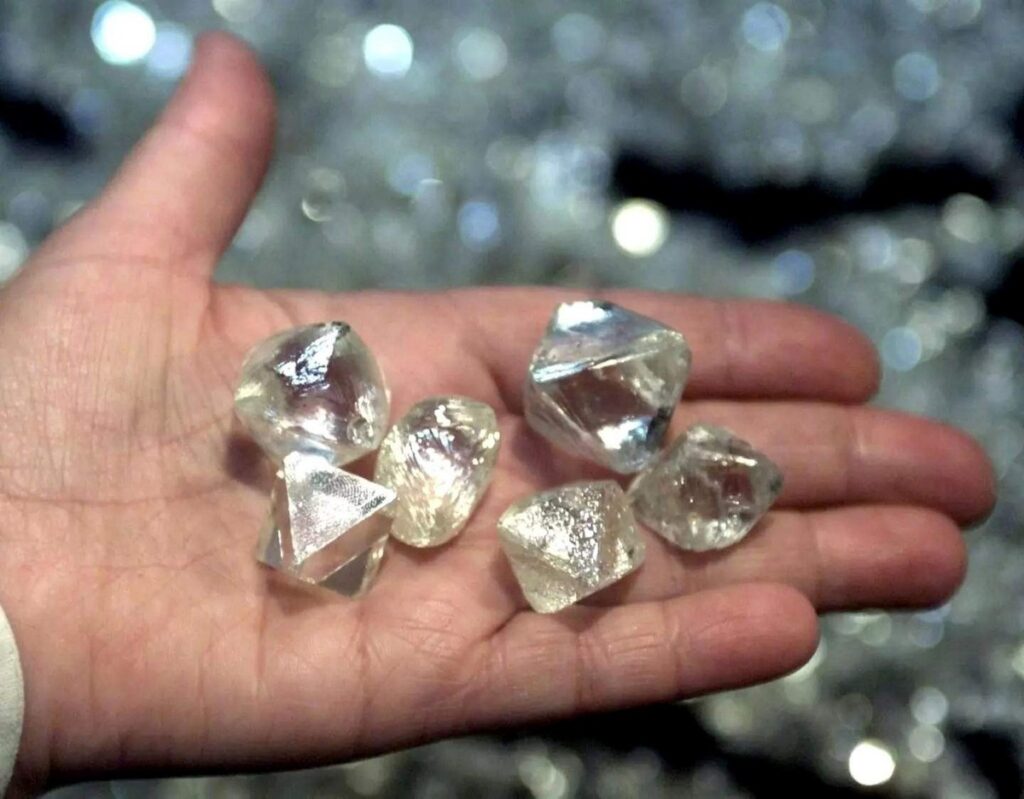
There are few places in the world where one can hunt for natural diamonds, and one of them is Crater Diamonds State Park in Arkansas, the only diamond field in all of North America. The 37-acre volcanic crater is brimming with all kinds of naturally-formed rocks, gemstones, and minerals, all of which are for keeps when found. To date, over 33,000 diamonds have been found by visitors, including the 40.23-carat beauty dubbed “Uncle Sam.” So, it is not surprising that diamonds are Arkansas’s state gem.
Meteorite Magnet
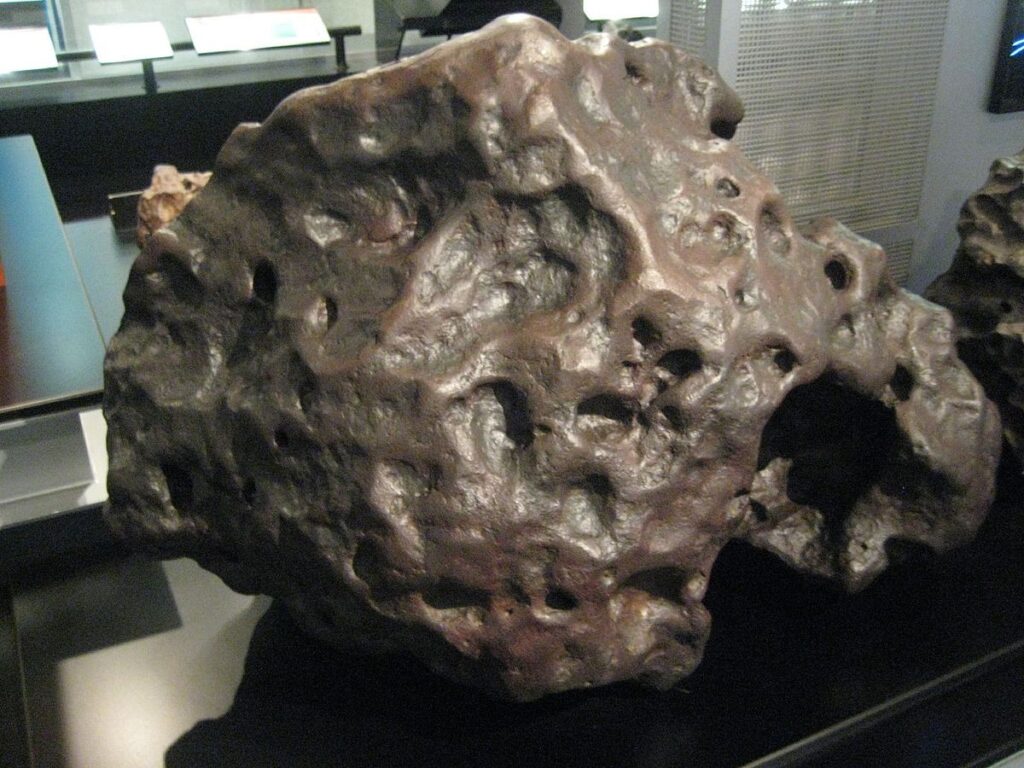
Every year or two, meteorites weighing at least two pounds fall into Arkansas, while space material less than two pounds falls up to fifty times more frequently. In 1930, the second-largest witnessed meteorite fall in North America was named after Paragould county. While it split into many pieces before crashing, the largest fragment weighs a whopping 370 pounds.
Why is it Pronounced “Arkansaw?”
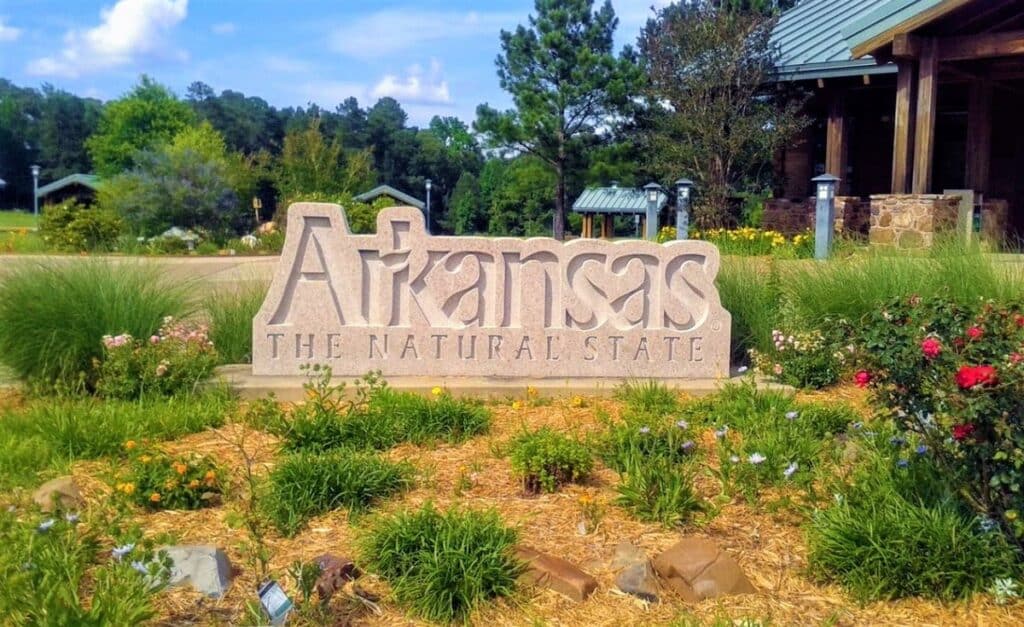
The state’s name is derived from the plural of the French term Arcansa, which refers to a native people who settled in Arkansas. Two senators disputed the official pronunciation until 1881, when a state legislature determined that the final ‘s’ should be silent, as it was in the original French.
The Arkansan Image

Most people’s image of an Arkansan is that of a banjo-playing, rural, laid-back country person. While many Arkansans refute this image, many others embrace it, which is considered an important part of their culture. It is of such importance that the Old State House Museum, one of the most historical buildings in the state, has an exhibit dedicated solely to this stereotype.
Bill Clinton’s Birthplace

The famous and relatively notorious 42nd President of the United States was born in Hope, Arkansas, on August 19, 1946. He spent most of his childhood in the state, attending three different schools, and initially dedicated his life to music before considering a career in politics when he turned sixteen. In 1979, he became the governor of Arkansas when he reformed the state’s educational system.
Girl Power

The first woman ever to be elected as a full-term senator, Hattie Wyatt Caraway, surprised Arkansas by announcing that she would run for a full term as a senator. This move shocked many aspirants who assumed she would step down after her partial term in 1932. Instead, she went on to win the subsequent 1938 election against a formidably convincing opponent, making her both the first woman in a senatorial position and the first to be re-elected.
The Man in Black

Before rising to fame lamenting about “Folsom Prison Blues” and advising the general public to “Don’t Take Your Guns to Town,” Johnny Cash was born to cotton farmers in Kingsland, Arkansas, on February 26, 1932. Leading the “rockabilly” scene in the 1950s, he was famous for such hits as “Ring of Fire,” “Man in Black,” and “I Walk the Line” before succumbing to a disease in 2003.
A Smoky State
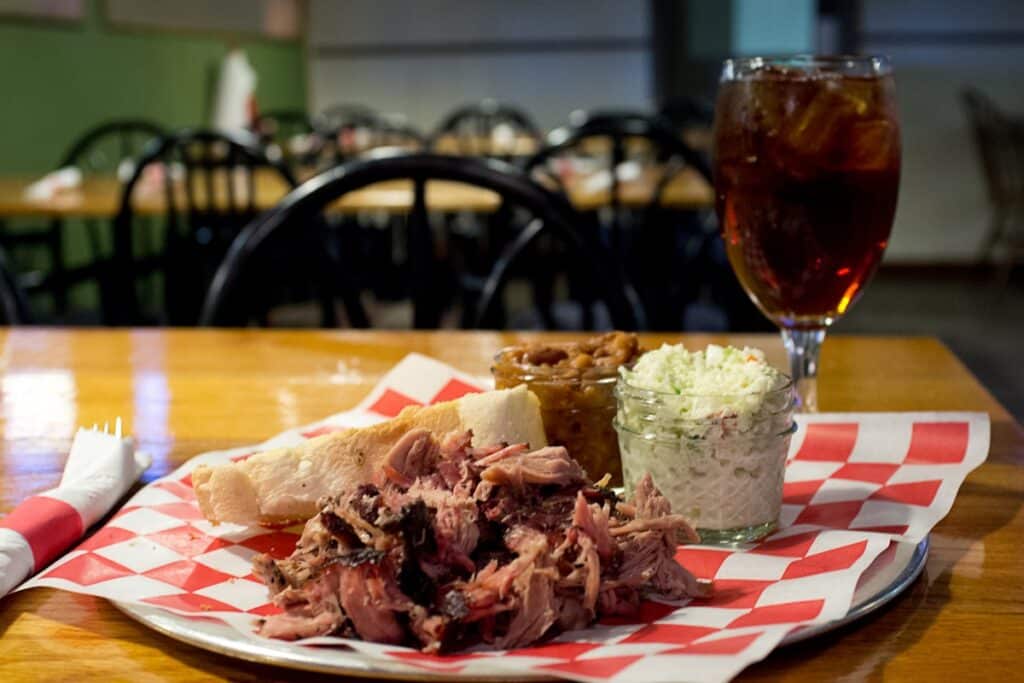
With its distinctive style, Arkansas is one of the three famous “barbecue regions,” along with Texas and Kansas. The Arkansas style was born out of a combination of techniques brought by immigrants from Tennessee and Virginia. Barbecues are such a big deal that Independence Day isn’t complete without one, and politicians use barbecues to woo voters.
Hunting Is a Way of Life

Hunting is regarded as one of the oldest traditions in Arkansas. Following the Civil War, guns were abundant and cheap and made hunting even more accessible to many. As a result, a large portion of the population participates in hunting for deer in the fall and more challenging hunts such as alligators and bears. Arkansas is notable for being the only state that grants alligator hunting licenses.
With Flying Colors
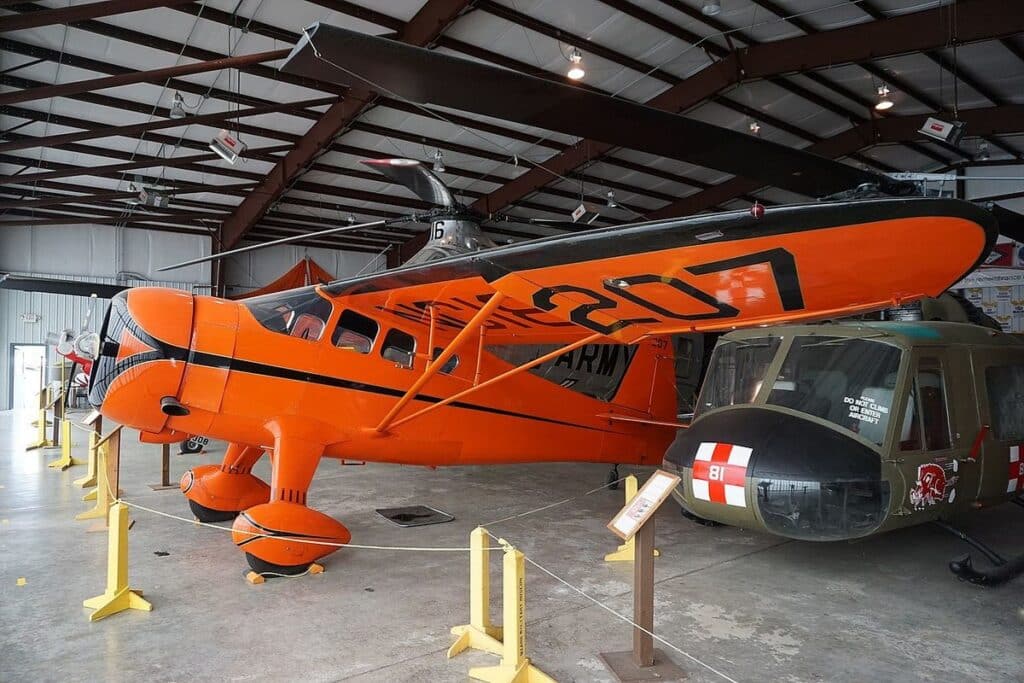
Aircraft enthusiasts are in for a treat, as the Arkansas Air and Military Museum houses some of the few historic aircraft that are still functional. Racing planes dating as far back as before World War II are on display, many of which were restored to flying condition. The state has a long history of aviation, and it’s on full display in this one-of-a-kind museum.
All Aboard!
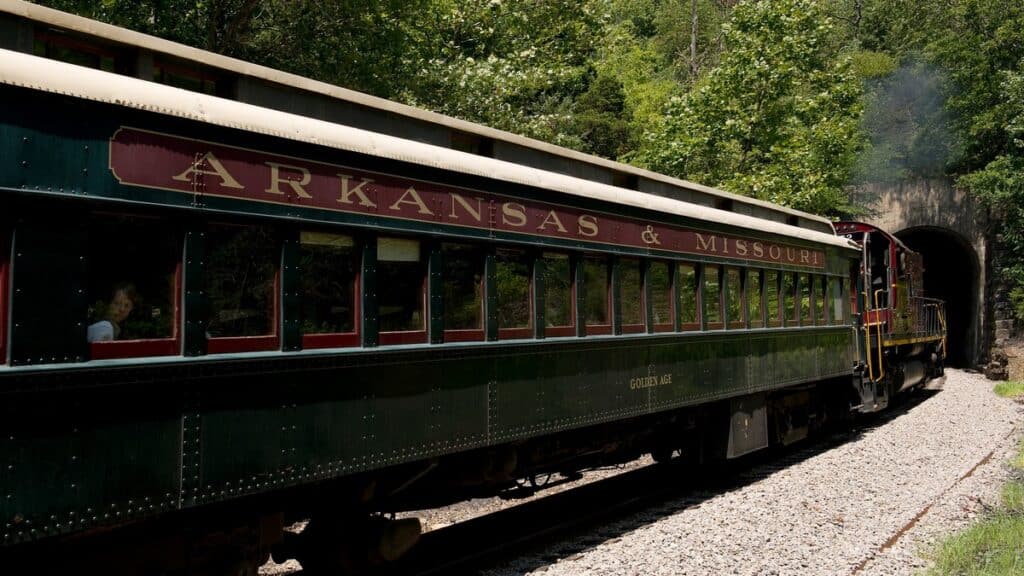
The Arkansas and Missouri Railroad is one of the last antique trains still in operation and offers both passenger and freight service. Running through the mountains and valleys of Northwest Arkansas, these old-school trains provide visitors a chance to travel as their forefathers did, in elegant coaches that harken back to an elegant, bygone era.
Maritime Merrymaking

Arkansas is home to the longest-serving submarine in the world, the USS Razorback. The mostly operational craft provides visitors a full sensory experience of what it’s like to be in a submarine, from the climb down to the authentic visuals, sounds, and even the smells. Those who wish to experience being submariners for an extended period can reserve the museum and submarine for birthday parties and other special events.
Love Discounts? Love Arkansas

One of America’s retail juggernauts had its beginnings as a humble discount store in Bentonville, Arkansas, in 1950, called the Walton’s 5-10. The success of this experiment led to an expansion in rural areas to avoid large competitors, which eventually gave rise to what is now the Wal-Mart chain. The museum is fashioned to mimic the very first shop, and visitors can enjoy authentic 50s-style soda fountains and ice cream while listening to music appropriate for the time.
